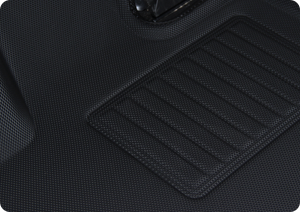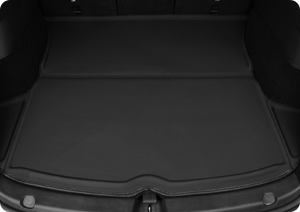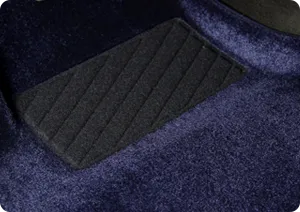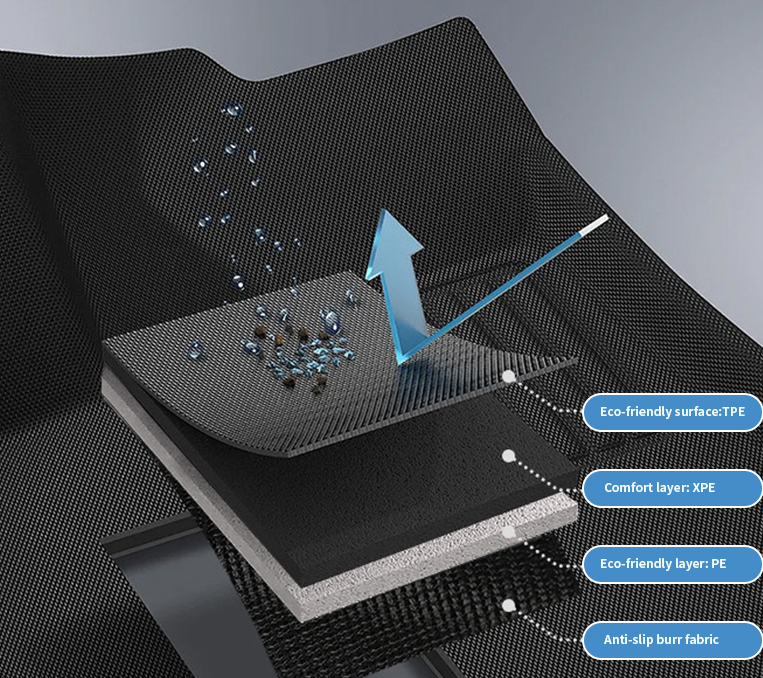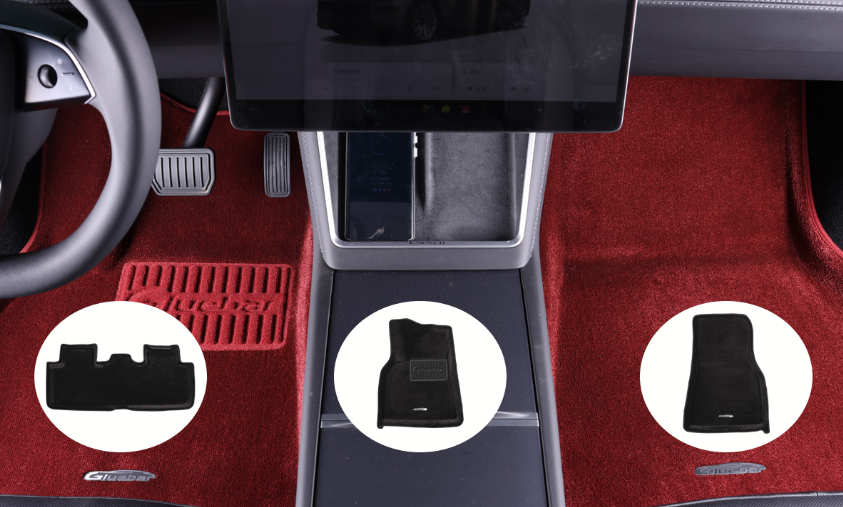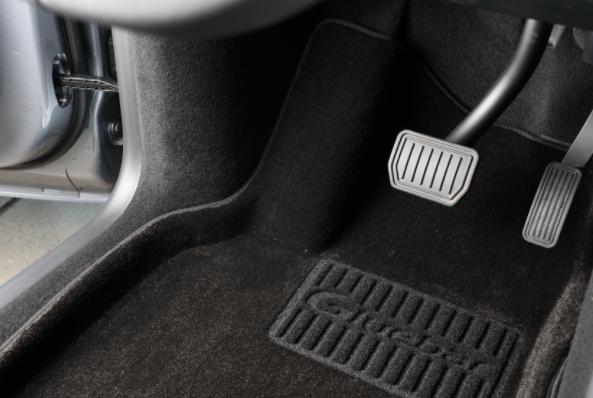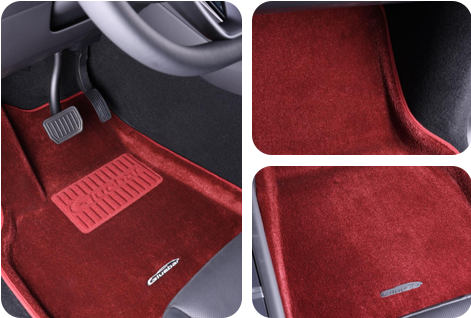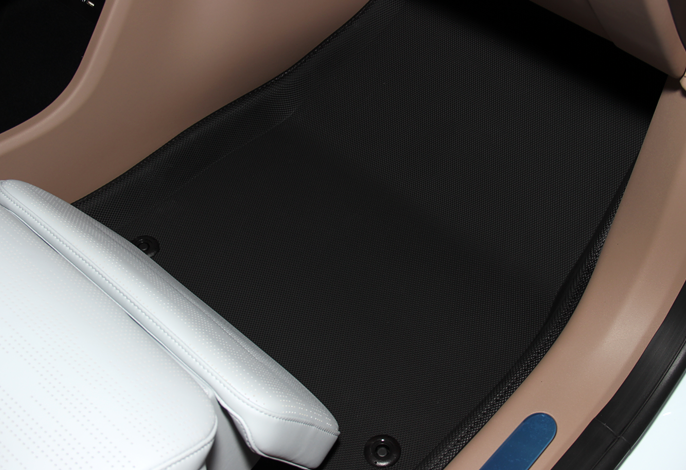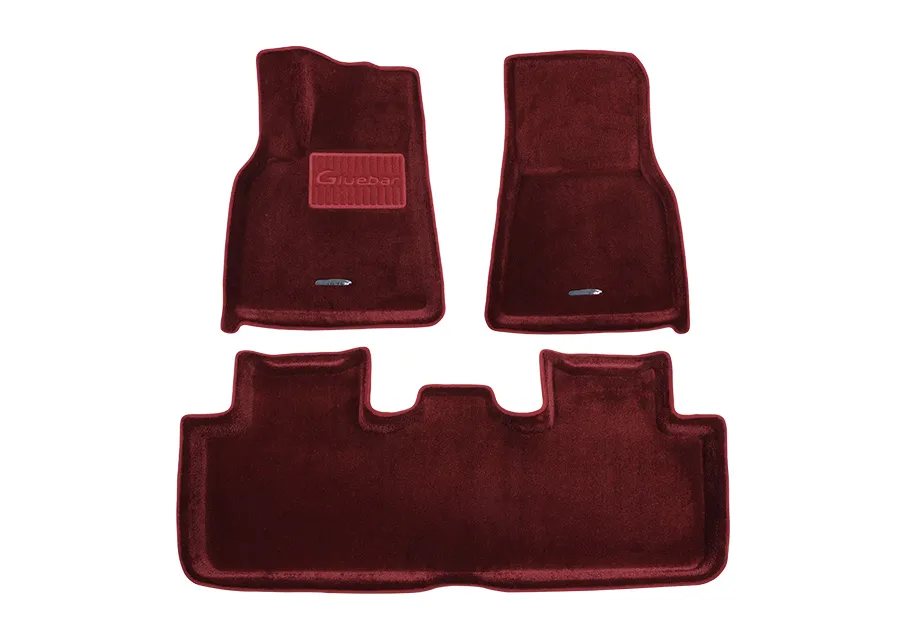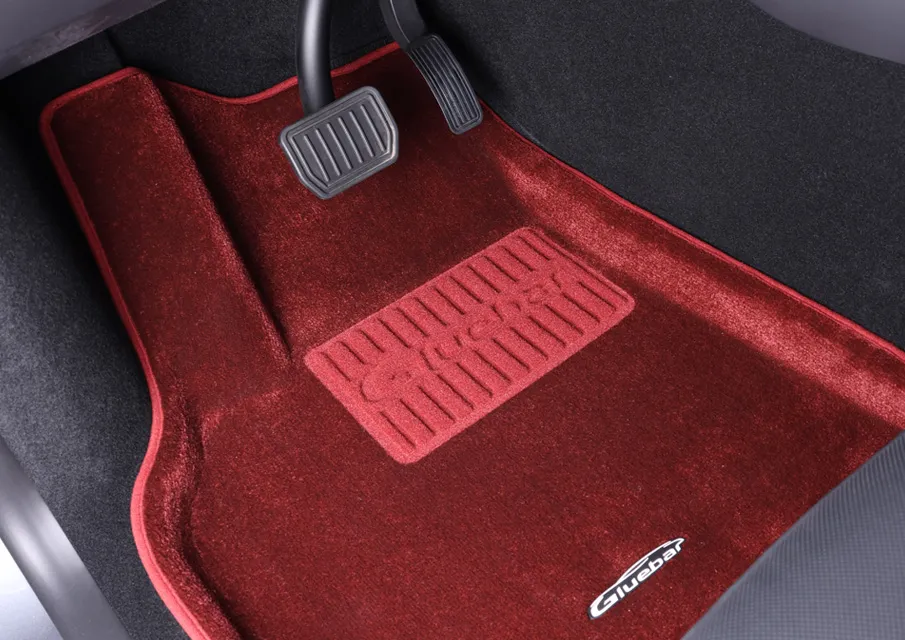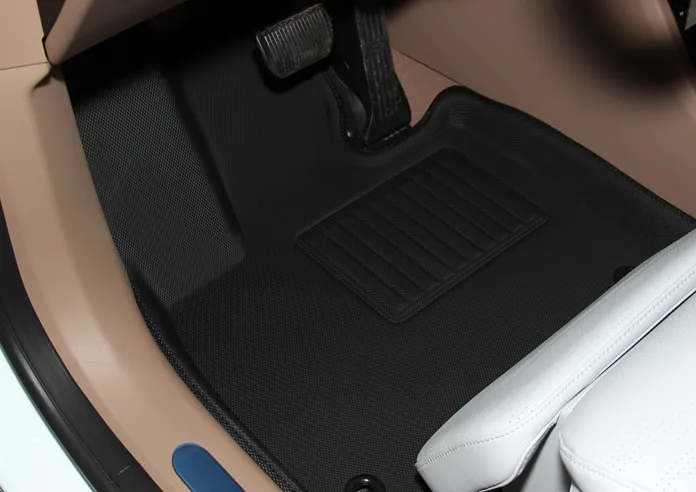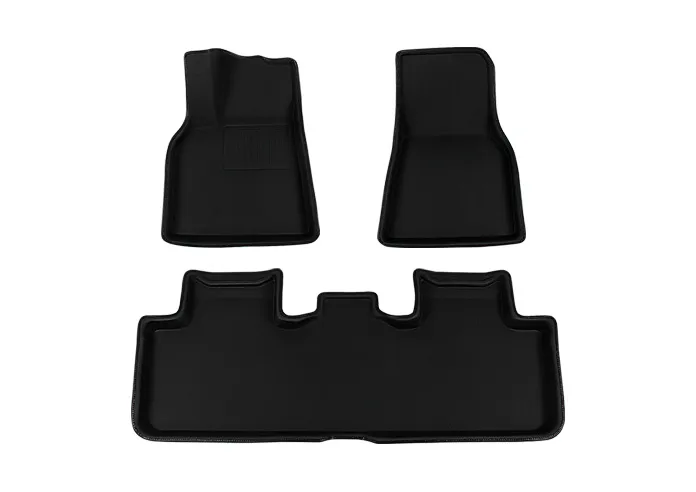Five years ago, it was all about style and patterns.
Now, the top questions are: “Is it eco-friendly?” and “Does it smell?”
Families with kids or pets especially want mats that are safe and non-toxic.
Eco-friendly is no longer a slogan. It’s common sense.
What Is TPE and Why Is It the New Standard?
TPE (Thermoplastic Elastomer) is an eco-friendly material with both softness and flexibility.
It combines the stretch of rubber with the moldability of plastic.That’s why it’s used in baby products, medical tools, and car interiors.
Most importantly, it’s non-toxic, odor-free, and recyclable. In floor mats, TPE can be shaped by heat pressing—no glue needed. That makes it both safe and stylish.
What’s Wrong with Traditional Floor Mat Materials?
Many Still Use PVC, Rubber, or Foam Mats — But They're Outdated, These materials no longer match modern eco needs. Here’s why:❌ PVC may release toxic gases in high heat because of plasticizers.
❌ Rubber mats smell strong and are hard to clean.
❌ Foam mats absorb water easily, get moldy, and wear out fast.
❌ They turn stiff in cold weather, which can be unsafe.
❌ They don’t support custom shapes or detailed designs.
Why Are Buyers Willing to Pay More for Eco-Friendly Mats?
Being eco-friendly isn’t just a nice bonus anymore—it’s expected.In places like Europe, Japan, and the U.S., car interiors must meet strict safety and environmental rules.
TPE doesn’t contain heavy metals, VOCs, or harmful chemicals. It meets RoHS and REACH standards.
For many families, that means safer air and a healthier space for kids and pets.
“Eco + Safe” is becoming the new must-have in floor mat shopping."
TPE Floor Mats Make Driving More Comfortable
Many drivers say the same thing after switching to TPE floor mats: “I should’ve done this sooner!”They don’t slip around and fit the car better, thanks to their raised edges.
Even on rainy or snowy days, the mats trap water and mud with no leaks.
In hot summers, they stay odor-free—even after hours in the sun.
They also feel soft under your feet, making every drive more comfortable."
Why is TPE more valuable for factories and brands?
- For manufacturers, TPE works well with heat pressing. It speeds up production.
- It also supports different colors, textures, and shapes, making products easier to customize.
- You can add a customer’s logo or design right onto the mat to boost brand identity.
- TPE also helps with getting certifications like ISO, IATF, and RoHS, which matter for global markets.
- For OEM brands, TPE is a flexible and compliant material choice.
Market Trends and Opportunities for Eco-Friendly TPE Floor Mats
The global demand for eco-friendly auto parts is growing fast. In markets like North America, Europe, Japan, and South Korea, green materials are now a basic requirement. Families with kids, pets, or sensitive health needs care more about product safety.Eco-friendly isn’t just a bonus anymore—it’s your ticket into the industry. TPE floor mats are becoming the go-to material for this new standard.
Eco-friendly isn’t just a trend — it’s a responsibility.
Car floor mats shouldn’t be just about low prices.In today’s world, going green is something everyone expects. Using eco-friendly materials is part of that responsibility.
TPE mats are non-toxic, long-lasting, and easy to fit. That’s why more brands around the world are choosing them.
If you’re picking materials, don’t overlook this upgrade.
Eco-friendly might be the one reason your customer decides to buy.

